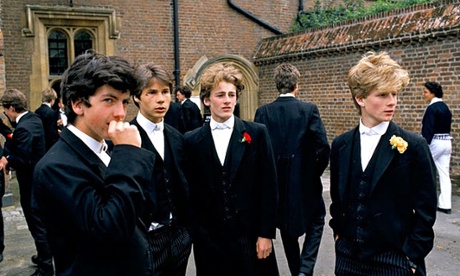The system fails bright pupils from ordinary backgrounds. And here’s how we all lose ...

Let’s call him Matt. Aged 16, he is tall, taciturn and highly talented. He goes to a state school and is about to choose his A-levels. For all kinds of reasons, he believes he should progress, via Oxbridge or the Ivy League, to become an aerospace engineer.
So should he do further maths? If maths is the new rock’n’roll in education, then further maths is a VIP enclosure that fewer than 15,000 young people a year get into.
Last week, I had the chance to put this question to the deputy head of a top private school. “By all means do further maths, but only if you are guaranteed to get an A,” came the answer, as if it were a no-brainer. It was advice born out of years of practical knowledge.
Other opinions are available of course – and that’s the problem. This year, a quarter of a million 16-year-olds will make their A-level choices relying on hearsay, myth and information that is outdated or uncheckable. Those choices will shape their options when it comes to university – and the courses they apply for will then shape their chances of getting in.
There is, in short, massive asymmetry of information in the post-16 education system and the critical determinant is class. Kids at private school can rely on schools that have continual informal contact with elite universities. The result is that – for all the hard work being done by outreach teams in Russell Group universities, and by access teams in state schools – there’s an inbuilt advantage among those going to private schools based on informal knowledge.
Last year’s results for further maths demonstrate the problem. In English state schools, further education and sixth-form colleges, about 11,100 young people sat the exam; in the private sector, which accounts for just 7% of the school population, 3,600 sat it. And private school results were better, with 69% getting A or A* versus 54% in state schools.
Government tables show that this achievement gap is even more pronounced for ordinary maths and the three main science subjects. There are numerous private websites that offer A-level advice, and anecdotally social media are abuzz with the wisdom of teenage crowds over course and subject choices.
But why isn’t there a central repository of information that would turn all this folkore into a level playing field of checkable knowledge? Why isn’t there a single, open-source database that models all specific pathways into higher education? Without it, state school students will always find it hard to win the inside-knowledge game.
At my old university, Sheffield, they told me that you need maths and physics as part of three A grades to study aerospace engineering. That’s in line with the Russell Group’s guide, which also tells you to add design/technology, computer science or further maths.
The admissions tutor of an Oxbridge college, however, tells me: “I think here they’d be worried about no further maths, especially if it was offered at school but they didn’t take it, though I do worry that we send out mixed messages about this.”
The knowledge asymmetries deepen once you realise that elite universities require additional, bespoke tests. Cambridge University’s website reveals that if you want to do engineering at Christ’s, Peterhouse or St John’s you might need to take an extra exam called Step.
In a cantankerous, unsigned diatribe, the Step chief examiner for 2014 complains that only 3.8% of applicants scored top marks. The majority were not prepared for the kind of thinking they had to do. “Curve-sketching skills were weak,” the examiner noted, together with “an unwillingness to be imaginative and creative, allied with a lack of thoroughness and attention to detail”.
I will wager that the people who scored top marks knew that their curves had to look like Leonardo da Vinci’s and that they had to demonstrate imagination and creativity – because their teachers had long experience of this exam, and the others had not. One Oxbridge admissions tutor admitted to me that such testing may add a further barrier to people from state schools.
Suppose Matt wants to go to Oxbridge more than he wants to be an aerospace engineer? Here the advice is – for those in the know – really clear. Don’t apply for the most popular courses, where there can be 12 people for every place. Work out the college and subject combinations that reduce the odds to just three or four to one.
Oxford’s website shows the success ratio for getting on to its popular engineering and economic management course is just 10%, while the success rate of applications for materials science is 42%. A senior administrator at Oxford told me that they suspected few state school teachers really understand this game of playing the ratios. State-school students and people from ethnic minorities crowd each other out by going for the same, obvious, high-ratio and vocational courses.
Why should this matter to the majority of young people, who do not aspire to go to an elite university? And to the rest of society? First, because it is creating needless inequality of opportunity and is just the most obvious example of how poor access to informal knowledge penalises state school kids. Second, because in an economy set to be dominated by information and technology, those 15,000 people who can attempt further maths each year are the equivalent of Aztec gold for the conquistadores. Their intelligence will be the raw material of the third industrial revolution.
There is no reason – other than maintaining privilege – to avoid presenting subject and course choices clearly, logically and transparently. When the system fails bright kids from non-privileged backgrounds, we all lose.

No comments:
Post a Comment